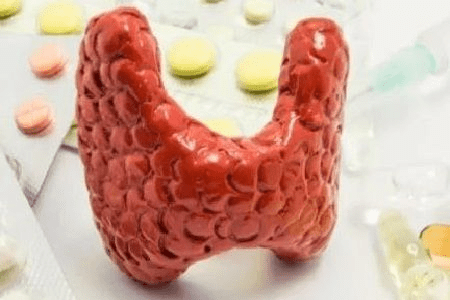A guide to thyroid disease and the “iodine” diet

As people pay more and more attention to thyroid disease, more and more people are learning that thyroid disease is closely related to iodine diet, but many patients are confused about “how much” and “how little” iodine should be consumed. We will now take a look at whether and how patients with thyroid disease should control their diet.Thyroid disease and iodine diet.For healthy adults, the World Health Organisation (WHO) recommends an iodine intake of 150 micrograms per day for adults and 250 micrograms per day for pregnant women and lactating mothers.
1. Low iodine diet: The standard for a low iodine diet is a daily dietary intake of no more than 50 micrograms of iodine. Patients who need a low iodine diet include those with Hashimoto’s thyroiditis, Hashimoto’s hypothyroidism and post-hemicolectomy thyroid cancer.
2. Avoid iodine diet: i.e. try to avoid iodine-containing foods and do not eat them. The prohibition of iodine requires that foods high in iodine must not be consumed, and that foods containing much iodine, such as iodised salt, seafood, wakame and nori, are avoided as far as possible. For example, patients with hyperthyroidism; 2-4 weeks before iodine 131 treatment and 2-4 weeks after iodine 131 treatment.
3. Iodine-appropriate diet: daily iodine intake is about 120 micrograms. You can eat the same as healthy people, but you should also avoid eating large amounts of high iodine foods for a long time. Patients with thyroid nodules or after total thyroidectomy, for example, can have an iodine-moderate diet.
4. Iodine-supplemented diet: This means supplementing food with foods containing high levels of iodine as needed. For example, patients with endemic goitre and cretinism.
Introduction to iodine content of foods.
1. Foods rich in iodine are as follows, which you can choose according to your situation.
(1) Seaweeds: seaweed and nori. Seaweed foods are a natural source of iodine. Dried seaweed has a high iodine content of 36,240ug/100g and dried seaweed has 4323ug/100g, so patients on a low iodine or anti-iodine diet must be careful not to eat these foods.
(2) Iodised salt: According to the 2012 Iodine Content of Table Salt regulations, the standard for iodisation of table salt is 20-50ug/g. If you consume 4-5g of iodised salt per day, your daily iodine intake will far exceed the low iodine daily standard. So if you are on a low iodine diet you must switch to non-iodised salt. Chicken essence also contains high levels of iodine, up to 766ug/100g.
(3) Seafood: all seafood is high in iodine, marine fish, shellfish, cuttlefish, shrimp skin, shrimp (rice), etc.; additives containing seafood, such as carrageenan, sea agar, algae gum, algae salic acid, etc.
(4) Milk dairy products and eggs: eggs, especially egg yolks, also have a high iodine content, with one egg containing 24 micrograms of iodine and milk containing about 25-50ug/100ml of iodine, both being one of the most important sources of iodine in people’s lives.
(5) Soybeans and most soy products (soy sauce, soy milk, dried tofu): also high in iodine.
2. Dietary options for low iodine (requiring cooking with non-iodised salt).
(1) Fresh vegetables and fresh fruit.
(2) Meat to a maximum of 150g per day.
(3) Egg whites.
(4) Cereals and potatoes should not exceed 300g per day.
(5) Unprocessed nuts.
(6) Vegetable oils.
(7) Distilled water preferred, followed by purified water.
(8) Honey.
(9) Condiments: non-iodized salt, non-iodized soy sauce.
In summary, thyroid disease diet varies, so you can adjust your diet according to your condition and be the controller of your health!



